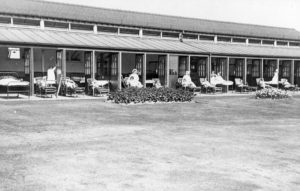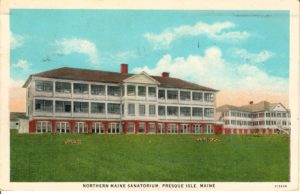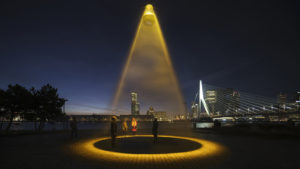In 1882, Robert Koch (German, 1843–1910) discovered the bacteria that causes tuberculosis. At the time, one in seven people in Europe and the United States died of tuberculosis. People living in poverty were especially vulnerable.
Sunlight and fresh air were common treatments for tuberculosis until 1943, when antibiotics were proven to cure the disease. Sanatoriums, special hospitals for treating and isolating tuberculosis patients, were often located in the mountains or by the sea. These costly, long-term retreats were too expensive for most people. Although some sanatoriums appear luxurious, the experience could be brutal for patients who were forced to endure long hours outside in the bitter cold.
Although light doesn’t kill germs inside the body, it does support well-being. Viewing nature encourages rest and relaxation. Bright light helps treat winter depression. Ultraviolet light can disinfect rooms and equipment.
Content from the exhibition Design and Healing: Creative Responses to Epidemics, curated by MASS Design Group and Cooper Hewitt, Smithsonian Design Museum
+++++++++++++++++++++++++++++++++++++++++++++
Open-Air Sanatorium, ca. 1920
The patient rooms in this sanatorium open onto the lawn. Reclining chairs for tuberculosis patients were adapted for recreational sunbathing in the 1920s and 1930s.

Photograph: Patients at a sanatorium in West Midlands, UK; Wellcome Collection
+++++++++++++++++++++++++++++++++++++++++++++
Sleeping Porches, 1936
This sanatorium for treating tuberculosis has semi-enclosed porches for sleeping. Sleeping porches became a popular home addition in the early 20th century.

Postcard: Northern Maine Sanatorium, Presque Isle, Maine, USA
+++++++++++++++++++++++++++++++++++++++++++++
Urban Sun, 2021
Traditional UV light is harmful to humans, but far-UVC (with a wavelength of 222 nanometers) can sanitize air and materials safely. Studio Roosegaarde’s project envisions safer zones in public spaces created by circles of far-UVC light.

Photograph: Studio Roosegaarde, The Netherlands
One thought on “Light and Healing”
Sharon Morrissey on December 12, 2021 at 1:11 pm
Dear Ellen,
I am studying healthcare compliance at Loyola University Chicago Law. I am in my third year and have chosen my Capstone Project to be centered around the concepts that the Mass Design Group teach, related to airborne transmittable diseases. This is so very exciting to find the Cooper Hewitt, Smithsonian Design Museum Exhibit.
I am thrilled to find this fantastic exhibition. I would honored to meet and interview the curators as part of my project. In addition, I hope to visit. My capstone project is divided into two semesters. Next semester will be my second.